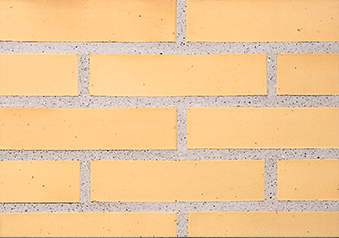![RT 201 Yellow smooth DKNF]() Compressive strength: 12 N/mm2Gross density: 1300 kg/m3Water absorption: 22 %w/wInitial rate of absorption: 3,5 ± 0,5 kg/m2Exposure class: MX3.1
Compressive strength: 12 N/mm2Gross density: 1300 kg/m3Water absorption: 22 %w/wInitial rate of absorption: 3,5 ± 0,5 kg/m2Exposure class: MX3.1Price on request
Go to RT 201RT 201, Yellow smoothGWP: 6.8 kg Co2-eq / m2 (A1-A3) ?Global Warming Potential (GWP) is a measurement unit that shows how different materials and
processes affect global warming. The lower the GWP, the less a material contributes to climate
change. Read more here.![RT 202 Yellow oak embossed DKNF]() Compressive strength: 12 N/mm2Gross density: 1300 kg/m3Water absorption: 22 %w/wInitial rate of absorption: 3,5 ± 0,5 kg/m2Exposure class: MX3.1
Compressive strength: 12 N/mm2Gross density: 1300 kg/m3Water absorption: 22 %w/wInitial rate of absorption: 3,5 ± 0,5 kg/m2Exposure class: MX3.1Price on request
Go to RT 202RT 202, Yellow oak embossedGWP: 6.8 kg Co2-eq / m2 (A1-A3) ?Global Warming Potential (GWP) is a measurement unit that shows how different materials and
processes affect global warming. The lower the GWP, the less a material contributes to climate
change. Read more here.![RT 205 Yellow antique embossed DKNF]() Compressive strength: 12 N/mm2Gross density: 1300 kg/m3Water absorption: 22 %w/wInitial rate of absorption: 3,5 ± 0,5 kg/m2Exposure class: MX3.1
Compressive strength: 12 N/mm2Gross density: 1300 kg/m3Water absorption: 22 %w/wInitial rate of absorption: 3,5 ± 0,5 kg/m2Exposure class: MX3.1Price on request
Go to RT 205RT 205, Yellow antique embossedGWP: 6.8 kg Co2-eq / m2 (A1-A3) ?Global Warming Potential (GWP) is a measurement unit that shows how different materials and
processes affect global warming. The lower the GWP, the less a material contributes to climate
change. Read more here.![RT 208 Yellow smooth with burns DKNF]() Compressive strength: 15 N/mm2Gross density: 1300 kg/m3Water absorption: 22 %w/wInitial rate of absorption: 3,5 ± 0,5 kg/m2Exposure class: MX3.1
Compressive strength: 15 N/mm2Gross density: 1300 kg/m3Water absorption: 22 %w/wInitial rate of absorption: 3,5 ± 0,5 kg/m2Exposure class: MX3.1Price on request
Go to RT 208RT 208, Yellow smooth with burnsGWP: 6.9 kg Co2-eq / m2 (A1-A3) ?Global Warming Potential (GWP) is a measurement unit that shows how different materials and
processes affect global warming. The lower the GWP, the less a material contributes to climate
change. Read more here.![RT 220 Yellow Tommerup embossed]() Compressive strength: N/mm2Gross density: kg/m3Water absorption: %w/wInitial rate of absorption: kg/m2Exposure class:
Compressive strength: N/mm2Gross density: kg/m3Water absorption: %w/wInitial rate of absorption: kg/m2Exposure class:Price on request
Go to RT 220RT 220, Yellow Tommerup embossedGWP: 10.14 kg Co2-eq / m2 (A1-A3) ?Global Warming Potential (GWP) is a measurement unit that shows how different materials and
processes affect global warming. The lower the GWP, the less a material contributes to climate
change. Read more here.![RT 301 Red smooth DKNF]() Compressive strength: 22 N/mm2Gross density: 2000 kg/m3Water absorption: 12 %w/wInitial rate of absorption: 1,8 ± 0,5 kg/m2Exposure class: MX3.1
Compressive strength: 22 N/mm2Gross density: 2000 kg/m3Water absorption: 12 %w/wInitial rate of absorption: 1,8 ± 0,5 kg/m2Exposure class: MX3.1Price on request
Go to RT 301RT 301, Red smoothGWP: 1.3 kg Co2-eq / m2 (A1-A3) ?Global Warming Potential (GWP) is a measurement unit that shows how different materials and
processes affect global warming. The lower the GWP, the less a material contributes to climate
change. Read more here.![RT 302 Red oak embossed DKNF]() Compressive strength: 20 N/mm2Gross density: 1400 kg/m3Water absorption: 12 %w/wInitial rate of absorption: 1,5 ± 0,5 kg/m2Exposure class: MX3.1
Compressive strength: 20 N/mm2Gross density: 1400 kg/m3Water absorption: 12 %w/wInitial rate of absorption: 1,5 ± 0,5 kg/m2Exposure class: MX3.1Price on request
Go to RT 302RT 302, Red oak embossedGWP: 1.3 kg Co2-eq / m2 (A1-A3) ?Global Warming Potential (GWP) is a measurement unit that shows how different materials and
processes affect global warming. The lower the GWP, the less a material contributes to climate
change. Read more here.![RT 306 Red antique embossed DKNF]() Compressive strength: 20 N/mm2Gross density: 1400 kg/m3Water absorption: 12 %w/wInitial rate of absorption: 1,5 ± 0,5 kg/m2Exposure class: MX3.1
Compressive strength: 20 N/mm2Gross density: 1400 kg/m3Water absorption: 12 %w/wInitial rate of absorption: 1,5 ± 0,5 kg/m2Exposure class: MX3.1Price on request
Go to RT 306RT 306, Red antique embossedGWP: 1.3 kg Co2-eq / m2 (A1-A3) ?Global Warming Potential (GWP) is a measurement unit that shows how different materials and
processes affect global warming. The lower the GWP, the less a material contributes to climate
change. Read more here.

Alpha
Thanks to our wide range of extruded bricks, it's quite easy to find the right brick for the right price. ”Alpha” is an extruded brick of great quality, produced in series in state-of-the-art factories. The ”Alpha” brick is available in many colours and with different surface embossing.







